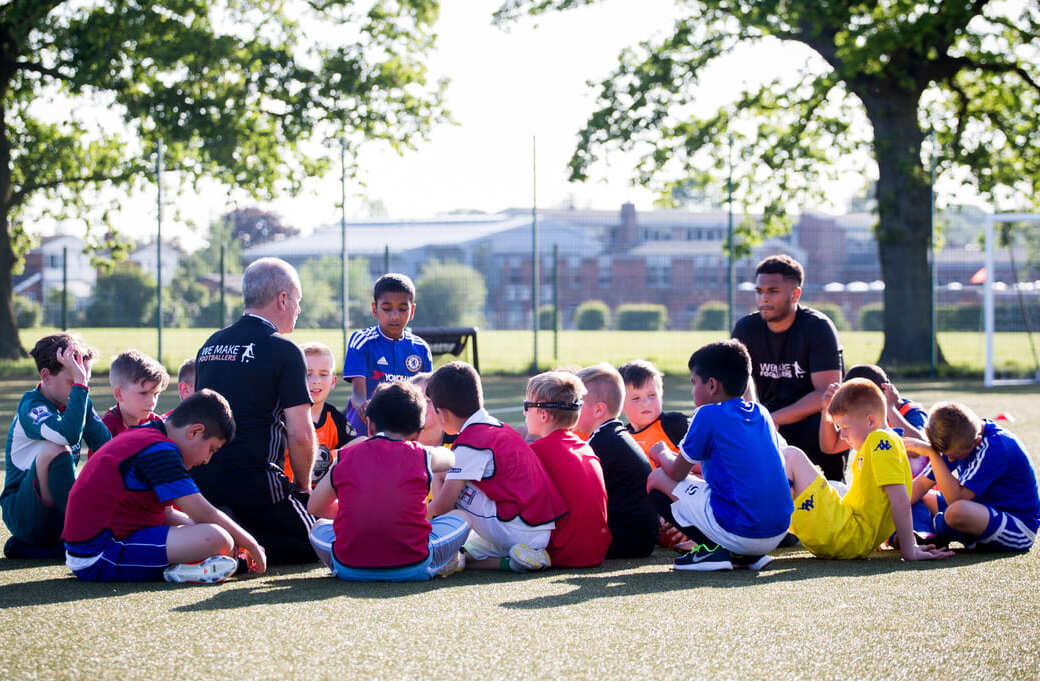Comprehensive Guide to Football Defending Drills
Introduction to Football Defending
Bright, exciting game, attack, run the ball, intercept and score! Attack - it always excites and arouses the most vivid emotions. However, defense is less spectacular, but no less important.
Preventing the opponent from scoring is not only about individual heroics, but also about teamwork, interaction and clever positioning. We are happy to share the basic and easy-to-do football defending drills. Whether you’re a coach new to teaching defensive football drills or an experienced mentor looking to add variety to your sessions, these drills will help your players learn how to defend in football properly.
Types of Defending Drills
There are a few basic aspects of defense without which maximum efficiency cannot be achieved.
|
Defensive Shape Drill | |
|
Set-Up |
How It Works |
|
Arrange players or defenders into a backline with their teammates and opposition attackers marked out. |
This drill emphasises maintaining proper defensive shape. The density of players on the field is significant for the best defense. Therefore, positioning each player about the other team member and the ball is a skill that must be practiced consistently. This ensures a compactness that is difficult to break. |
|
Improve Defensive Shape Drill | |
|
Set-Up |
How It Works |
|
Use cones or markers to define zones. Coaches instruct defenders to adjust their positions as the ball moves. |
Players practice shifting rapidly to cut out passing options and create a united block. Defenders focus on intercepting potential forward passes while maintaining balance and cover. |
|
Defending in the Box Game | |
|
Set-Up |
How It Works |
|
Divide players into roles—typically a goalkeeper, four defenders, and a group of attackers. |
Defenders work as a unit to prevent attackers from receiving the ball inside the penalty area. Once the ball enters the box, defenders must react quickly, clear the danger, or force a turnover. |
|
Defensive Clearances Drill | |
|
Set-Up |
How It Works |
|
Mark a clearance zone near the defensive third with cones. |
Players practice different types of clearances—using both head and foot—to push the ball safely out of danger. |
|
Group Defending Drill | |
|
Set-Up |
How It Works |
|
Arrange defenders in small groups with a focus on communication, with one of the defence football drills borrowed from famous training sessions. |
Players practice covering each other while pressing an attacker. The emphasis is on shifting, backing up, and calling out instructions to maintain a cohesive unit. |
|
1v1 Defending Drill | |
|
Set-Up |
How It Works |
|
Pair up players, each pair with one ball, in a confined area. |
One defender faces a lone attacker. The defender learns to force the attacker away from dangerous areas without fouling by applying controlled pressure. |
|
2v2 Battle | |
|
Set-Up |
How It Works |
|
Organize practice groups into pairs of two versus two in a small playing area. |
Defenders learn not only to tackle individually but also to support each other. When defending, one player pressures while the other covers the passing lanes. |
|
3-on-2 Defending Drill | |
|
Set-Up |
How It Works |
|
Set up a scenario where two defenders face three attackers. |
The defenders learn to rotate roles—where one actively pressures the ball while the other provides cover. The drill gradually transitions from a 3v2 to an equalized situation. |
|
Defending Against Continuous Attack | |
|
Set-Up |
How It Works |
|
Create an area where attackers continuously send balls forward, forcing defenders to work nonstop. |
The drill requires defenders to adapt quickly to shifts between organized and disorganised defending. |
|
Press and Cover Defending Drill | |
|
Set-Up |
How It Works |
|
Mark a small area where one defender presses the ball while others cover. |
As soon as a defender moves to pressure an opponent in possession, teammates adjust to cover spaces left open. The roles can be reversed after a set period. |
|
Attacking Into Defense Transition Drill | |
|
Set-Up |
How It Works |
|
Organize a drill that starts with a 2v2 situation and then quickly transitions into a 1v1. |
After losing possession, defenders immediately switch focus to mark the attacker. |
Advanced Defending Techniques
Once the basic drills are ingrained, it’s time to explore advanced techniques that elevate your defensive game.
Communication and Coordination
Advanced defending isn’t only about individual performance; it’s about how players move as a unit. Focus on drills that require constant verbal cues, eye contact, and synchronized movements. These elements are the hallmarks of effective defensive football drills.
Reading the Game
The best defenders have a keen sense of anticipation. Advanced drills often simulate game scenarios, forcing players to quickly assess threats, cut off passing lanes, and choose whether to press or hold. Using these drills to improve how to defend in football will sharpen players’ instincts.
Rotational Cover
In situations like the 3-on-2 drill, defenders must skillfully switch roles. One defender steps up to pressure while the other temporarily covers the vulnerable space. This rotating mechanism is crucial for dynamic defensive football tactics and is best developed with continuous practice.
Pressing and Compactness
Advanced defenders learn to press collectively without leaving gaps. Fine-tuning your press and cover techniques can stop opponents in their tracks, an essential skill for converting individual defensive skills in football to solid team performance.
Incorporating Defending into Team Play
Great individual defensive skills must translate into effective team play. Here are ways to integrate these drills seamlessly into match situations:
-
Simulated Game Scenarios. During scrimmages, set conditions that force teams to use defensive drills as part of their routine. For example, have the team practice maintaining a compact shape or completing a set number of successful defensive clearances before they can launch a counter-attack. This helps connect individual practicing efforts with broader team strategy.
-
Integrate with Attacking Drills. Defence and attack should be two sides of the same coin. Pair your defensive drills with football attacking drills so that players understand how to transition from defense to attack—often a critical moment in modern football.
-
Role-Specific Focus. Customize training sessions for different defensive roles. Centre-backs might work more on positioning and clearances, while full-backs practice overlapping and recovering. Tailoring your approach in football defender training ensures each player refines skills relevant to their position, building overall defensive strength.
Age-Specific Defending Drills
Not every drill suits every age group. When coaching youth or veteran players, modify your training methods to match their physical and mental development:
Younger Players
For youth players, focus on basic defending football drills that emphasise individual skills, like 1v1 defending and simple group exercises. The key is to keep drills fun, engaging, and straightforward. Use games like tag or small-sided challenges to build an intuitive sense of positioning and movement. These sessions lay the foundation for understanding how to defend in football while promoting teamwork and communication.
Older or Advanced Players
Older players, or those with a higher skill level, can handle more complex drills that simulate game pressure. Techniques such as rotational cover in a 3-on-2 drill, continuous attacking pressure, and pressing & cover drills help develop advanced defensive skills in football. Here, the focus shifts to refining technique, improving reaction times, and integrating tactical awareness.
Mixed Age Groups
When teams are composed of various age groups, blend simple drills with more challenging exercises. This accommodates different learning speeds while encouraging peer mentoring. More experienced players can lead by example, offering football tips defending that are both accessible and practical. Balancing the difficulty ensures everyone stays engaged and learns progressively.
Conclusion
By practicing a mix of fundamental drills like defensive shape and clearances, along with advanced techniques such as pressing transitions and rotational cover, your team will develop robust defensive football drills that hold up under match conditions.
Incorporating these drills into your regular training, adapting them to suit various age groups, and linking defensive practices with attacking drills can create well-rounded players who understand both sides of the game.



